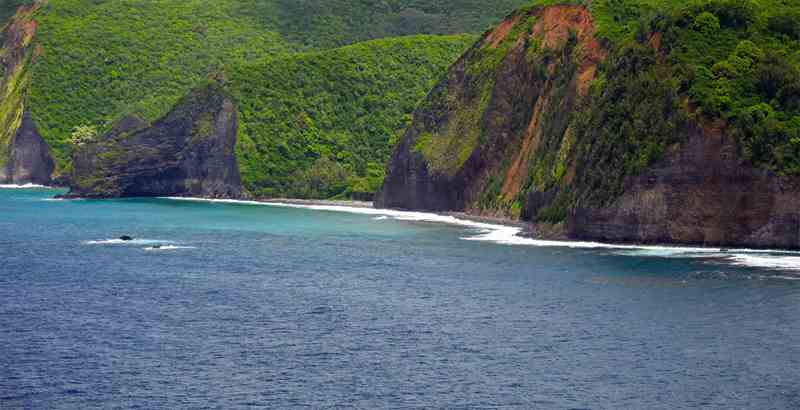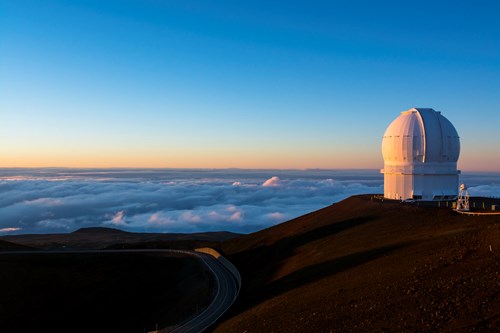
Renting A Car In Hawaii
The Business and Tourist Travelers Guide to Rental Cars in Kona, Hawaii
Aloha, and welcome to the tropical paradise of Hawaii. Whether you're here for business or pleasure, having a rental car at your disposal can make your stay on the islands much more enjoyable. From exploring hidden beaches to discovering vibrant local culture, a rental car in Hawaii opens up endless possibilities.
In this guide, we'll help you find the best deals on rental cars at Kona International Airport. We'll also give you tips, from driving directions to car rental requirements, traffic regulations, and must-see attractions.
How to find the best deals on Rental Cars in Hawaii?
The first step is to start your search early. Booking in advance can save you significant money and ensure you get the type of car you want.
Another tip is to compare prices from different rental companies. Don't just settle for the first deal you see - shop around and look for discounts or promotional codes that can help lower the cost even further.
Remember insurance options when renting a car in Hawaii. While it may seem like an added expense, having coverage could save you thousands if anything happens while driving on unfamiliar roads.
To compare prices and check the availability of rental vehicles, see car rental services in Hawaii.
Car Rental Options in Hawaii
Hawaii is a popular gateway for tourists exploring the big island. Many major car rental companies have offices on-site, making it easy for travelers to get behind the wheel and hit the road.
Budget Rent a Car and Enterprise Rent-A-Car offers competitive pricing and a wide selection of vehicles. Other notable options include Alamo, Avis, and Hertz. Each company has unique perks and benefits that may appeal to certain travelers.
It's important to note that some car rental agencies require advanced reservations during the peak travel season. To ensure availability upon arrival, it's recommended that you book your rental car well in advance.
Driving Directions from Kona Airport
Kona Airport is located around seven miles northwest of Kailua-Kona and approximately 25 miles from the Kohala Coast vacation region. To get to the airport, use Queen Kaahumanu Highway/HI-19 north or south and turn right onto Keahole Airport Road.
Turn right onto Keahole Street and follow the signage into the airport after less than a mile. Those returning a rental car should turn right off Keahole Airport Road into the rental car area.
If heading south towards Keauhou Bay or the Captain Cook area, take Queen Kaahumanu Highway (Highway 11). This highway also offers stunning views of the island's rugged terrain and volcanic landscapes.
It's important to note that some areas of Hawaii can be difficult to navigate due to limited signage and winding roads. GPS devices are highly recommended for those unfamiliar with the area.
What are the benefits of renting a car in Hawaii?
Car rentals can save travelers money compared to taking multiple cabs or tours across different destinations within the Kona Airport area. The benefits of having your own vehicle are numerous, and they will allow you to explore the islands at your own pace. You won't have to rely on public transportation or expensive taxis to get around. It allows for more privacy and comfort during your travels.
With a rental car, you can easily visit all the attractions that interest you without worrying about schedules or routes. It allows tourists to access remote parts of the island that public transport might need help to reach. It also offers an opportunity for scenic drives along beautiful coastal roads, which is not possible via other modes of transportation.
What are the requirements to rent a car in Hawaii?
Renters must have a valid driver's license from their home country. International travelers may need an International Driving Permit (IDP), depending on their country of origin. It is always best practice to check with your chosen rental company beforehand.
Learn how to obtain an International Driving Permit for driving in Hawaii.
Rental car companies have no problem renting to those with a valid driver's license between the ages of 25 and 70. If you're under 25 or over 70, you can still rent a car, but you'll likely have to pay an extra fee.
Drivers 21 to 24 can rent a car from most major companies. A surcharge is tacked on; it averages $25 per day but can be higher depending on the location. Also, renters in that age bracket may be restricted to certain car categories.
However, having a credit card on hand will make securing your vehicle much more accessible since many rental companies require one as security against damages or theft while using the vehicle.
What are the payment options for renting a car in Hawaii?
When renting a car in Hawaii, it's important to consider the payment options available. Most rental companies accept credit cards, including Visa, MasterCard, and American Express. Some companies may accept a debit card, but a credit card is usually required.
When picking up the rental vehicle, you must present your credit card so the company can put a hold on the deposit amount. You should bring your driver's license and proof of insurance when picking up your vehicle. Some rental agencies may require additional documents, such as a passport or utility bill, for verification.
Confirming what payment forms the company accepts before placing your reservation is advisable when booking online. This way, you can avoid any issues during pick-up and ensure a smooth process. It's always best to plan ahead and thoroughly research your preferred car rental agency's payment policies before making any reservations.
Frequently Asked Questions when Renting a Car in Hawaii
Q: What documents do I need to rent a car in Hawaii?
A: You will need your driver's license, credit card, and proof of insurance. If you're coming from outside the US or Canada, an international driving permit (IDP) may be required.
Q: Do you need an international driver's license to drive?
A: Countries that have ratified the Geneva Convention on Road Traffic (1949) may drive legally in Hawaii with their foreign national driver's license and a valid passport.
Q: Can I rent a car if I'm under 25 years old?
A: Some rental companies allow drivers as young as 18 but may charge an additional fee for drivers under 21 or 25.
Q: Do I need extra insurance when renting a car in Hawaii?
A: Hawaii's national car rental companies do not require renters to obtain renter's insurance or show proof of insurance. It is always the responsibility of the car renter to ensure that they are adequately insured.
Q: Do I have to pay toll fees when renting a car in Hawaii?
A: Toll roads are an expense you won't have to worry about when renting a car in Hawaii. There are no roads with tolls in Hawaii as of this writing.
Q: Can I drive on all Hawaiian islands with my rented car?
A: If you plan on taking your rental vehicle between islands via ferry or airplane, check with your rental company beforehand, as they may have restrictions or fees associated with island-hopping.
What happens if I get into an accident while driving a rented car in Hawaii?
In the event of an accident, you should immediately contact your rental car company and seek assistance. Depending on the situation, they may offer a free tow to their service center or assist you in scheduling repairs with an approved local repair facility.
You must notify your rental agency as soon as possible so they can help identify any additional coverage available to you. Be sure to document any damages and obtain witness statements if possible.
Additionally, it’s important to exchange insurance information with all parties involved and report the incident to the police if necessary. Go to the nearest police station if you need clarification or assistance.
What to do when driving in Hawaii for the first time?
Driving in Hawaii for the first time can be a thrilling experience. It can also be nerve-wracking if you need to familiarize yourself with the roads and traffic laws. Here are some tips to help make your first driving experience in Hawaii a success:
- Take your time, and don't rush. The Hawaiian islands have many scenic routes that you'll want to enjoy leisurely. Be sure to factor in enough travel time so you're relaxed and relaxed.
- Pay attention to road signs and speed limits. It's easy to get caught up in the beauty of Hawaii's landscapes, but keep it from distracting you from following traffic rules.
- Avoid peak hours if possible. Traffic congestion is common during morning and evening commuting times on weekdays.
- Watch for pedestrians and wildlife along the roadways, as they are common on the islands.
- Always wear your seatbelt while driving – it's required by law in Hawaii. Staying alert and aware will ensure a safe and enjoyable driving experience on these beautiful islands.
What to do if you're stopped by traffic police in Hawaii?
If you're driving in Hawaii, it's important to know what to do if you get pulled over by a traffic police. Remember that traffic laws vary from state to state, so it's worth familiarizing yourself with Hawaii's specific rules before hitting the road. This will help avoid misunderstandings with law enforcement officers during routine driving stops.
The first thing to remember is to always remain calm and polite. Keep your hands visible on the steering wheel and wait for instructions from the officer.
When the officer approaches your vehicle, ensure your license, registration, and insurance are ready for inspection. Turning off your engine and rolling down your window fully is also courteous.
Listen carefully to what the officer says and respond respectfully. If they ask you a question that requires an explanation or clarification, provide honest answers but don't offer too much information.
If you are issued a ticket or citation, accept it politely without admitting guilt or arguing with the officer. You can always contest the ticket later through legal channels if necessary.
What are the parking and traffic laws in Hawaii?
Knowing the parking and traffic laws is essential to avoid any hassles or tickets while driving around. Adults and children must wear seat belts and kid restraints at all times. When traveling in a motor vehicle, children from birth to age ten must ride in an approved child safety seat or a booster seat. It's also important to note that talking on your mobile phone while driving is illegal unless you use hands-free devices.
Like in mainland America, Hawaiians drive on the right-hand side of the road, and speed limits are expressed in miles per hour (mph). It is generally 25 mph in most urban and suburban areas. On highways, the speed limit increases to 50 mph or more. Drivers should also pay attention to posted signs, as roads within some cities have lower speed limits than the statewide maximum.
Hawaii has several special zones with its own unique speed limits. For instance, school zones typically have a reduced speed limit of 15 mph when children are present. When driving in wet conditions, drivers should be cautious and reduce their speeds accordingly.
Slippery road surfaces can cause cars to hydroplane or skid out of control at higher speeds. If rain is particularly heavy, visibility may be low, and drivers should slow down until they can better assess any hazards around them on the road ahead.
As for parking laws, never park within ten feet of a fire hydrant or 20 feet from an intersection. You should also avoid parking on sidewalks or crosswalks and ensure not to block driveways or alleys. Parking meters are commonly used throughout Hawaii's tourist areas, so bring some quarters with you.
Following these rules is crucial, as fines can be hefty if violated. If you receive a ticket in Hawaii, pay it immediately to avoid surcharges. Remember that respecting Hawaiian traffic laws keeps everyone safe and ensures trouble-free vacation experiences.
To check for reliable and affordable parking spaces in the area, see parking locations in Hawaii.
What are the alternatives to renting a car in Hawaii?
One alternative is using public transportation such as buses or shuttles. While this may take longer and limit your mobility, it does provide an affordable option for those who want to save money.
Another option is biking or walking if you plan on staying in one area. This allows you to enjoy the scenery while also being environmentally friendly. However, remember that some areas of Kona can have steep hills and hot weather, which can make this option challenging.
Some hotels offer shuttle services or bike rentals for their guests, providing a more convenient and cost-effective way to explore Kona without renting a car.
Discover the various transportation alternatives in Hawaii, including bus, train, and taxi services.
What are the must-see attractions I can visit using a rental car in Hawaii?

One of the must-see attractions in Kona is the Kaloko-Honokohau National Historical Park. This park features ancient Hawaiian petroglyphs, fishponds, and sacred temples that offer an insight into the culture and history of Hawaii.
Another attraction worth visiting is the Pu'uhonua o Hōnaunau National Historical Park. It's a place where Hawaiians used to seek refuge from punishment for breaking laws in ancient times. Visitors can explore historic sites like royal grounds, temple platforms, and reconstructed homes that showcase traditional Hawaiian architecture.
If you want to experience natural beauty at its finest, head to Kealakekua Bay State Historical Park. Visitors can hike to Captain Cook's Monument or take a boat tour around the bay while enjoying crystal-clear waters teeming with marine life.
If you're interested in astronomy, visit Mauna Kea Observatory. The observatory offers visitors guided tours of telescopes and stargazing experiences unlike any other.
Delve deeper into the tourism offerings of Hawaii, uncovering a wide range of attractions and experiences awaiting exploration and appreciation. See detailed information about the best tourism offerings available in Hawaii.
What accommodations are available in Hawaii?
Hawaii is a popular tourist destination that offers a wide variety of accommodations for visitors. From luxury resorts and condos to quaint bed-and-breakfasts and budget hotels, you can find something that meets your needs.
For the ultimate relaxation, choose one of the luxurious all-inclusive resorts, including golf courses, world-class spas, fine dining restaurants, and beautiful beachfront settings. For a more laid-back experience, consider staying at cozy bed-and-breakfasts or inns throughout town.
Another great option is vacation rentals offering spacious villas with private pools and ocean views or traditional beach houses near local attractions such as historical sites and scenic hiking trails.
Hotels in the area range from $88 for a night at a 3-star establishment to $90 at a 4-star establishment. If you're searching for something truly luxurious, staying at a 5-star hotel in Kona would set you back an average of $242.
To check the prices and see a range of hotels in and around the island, see details on available hotels and accommodations in Hawaii.

FREE Cancellations, NO card fees!

Value Options View Offers
Useful Information about Kona International Airport

See all the airport lounges, locations and opening times available at Kona International Airport
View...
See all bars and restaurants at Kona International Airport, including locations and if they are before or after check-in
View...
See all shops available at Kona International Airport - plan your duty free shopping in advance
View...
